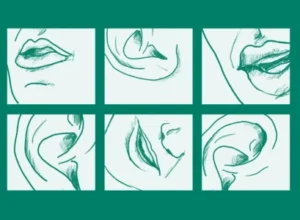
It’s fascinating how storytelling and deep listening formed the backbone of education before formal schools were commonplace. Now, with so much online noise, true listening feels almost like a lost yet re-teachable art.
“ I would say listening has long been one of humanity’s greatest tools for connection, learning, and wisdom-sharing, but it seems to be struggling in today’s fast-paced, digital-first world overloaded with information and the increasing lack of social interaction.”

Dr. Sixto
The Art of Listening: Three levels of Presence
As a Whole Health and Wellness Practitioner and Guide, I would say that in today’s world overloaded with information, misinformation, and plain distraction; plus the increasing lack of social interaction “Listening” is becoming a lost art. In times past societies learned through listening. Storytelling was education, and knowledge and wisdom were passed down through generations at community gatherings, the dinner table, and depending on your curiosity, the ever-popular salon.
My parents had knowledge and wisdom beyond anything imaginable despite growing up in a 1920’s world where education was limited and children were often the backbone of a family. Storytelling was ever-present for my parents from the most casual to formal interactions. Through Storytelling, they were able to build a business, be of service to others, and enlighten their existence. When people gathered whether around the table, in salons, or at social functions, the interactions centered around “the what” of what was happening at the moment. The interactions taught the agency needed to think through details and learn skills to understand how to handle or resolve the issue at hand or just plain life’s challenges. They learned whatever was needed to deal with getting along in their lifetime. In fact, for the majority of people, higher education was passed down through Storytelling and therefore the Art of Listening meant the process of a good education.
Holistic Health and Wellness requires at its core good listening to understand the root cause of wellness concerns and lifestyle factors. Active listening builds trust and connection so people feel heard and understood, in this way there can be a precedent for a personal action plan for comprehensive healing. In other words, healing the Whole Self. Remember: Life is in session and therefore everchanging. When we listen to ourselves, to the cues that our bodies transmit, the soul follows suit and we can see the bigger picture and make meaningful connections between the different aspects of well-being.
The Art of Listening: Three Levels of Presence
As a world, we focus more on how to speak than how to listen and in this speedster style of multitasking and electronic communication we’ve either forgotten or even in some cases never learned how to actively listen. The shift away from community norms (less in-person Storytelling) continues as technological advancements produce people who are intertwined with Artificial Intelligence and technology that takes away from integrating the Self wholly into the human experience.
As Human beings, one key factor as to how we are being affected by the advancements in technology and the ever-growing field of “staying connected” is that we seem to be in a state of perpetual stimulation to our central nervous system that throws us into non-urgent action, creating anxiety and for example the Fear of Missing Out (FOMO), and new yet understood modern afflictions of our innate Fight or Flight behavioral response.
In this constant attack, we need to have an acute sense of the need to be present and listen. Before the invention of the television, there was radio. Whole families gathered around the radio and listened intently to what was being said so as not to miss a single detail. Today, we all seem to be working online, relating online, and preferring entertainment online. While various video communication tools are wonderful to try to bring people together, we can’t see the whole person and, in many cases, can’t see them at all because their video is off and so we often multitask as we meet online, removing all chances to observe non-verbal communication. Add in that we aren’t actively listening, and we even lost the ability to pick up para verbal communication. The old adage “use it or lose it” comes deeply into play.
The importance of listening in communication cannot be overstated, and still, there is a need to say it again and again. Why? It’s just listening after all. We all do it every day, right? We do, and yet, we don’t all do it at the right level for the situation in which we are the listener. Listening is a complex skill. You read in the paragraph above that there can be many different levels of listening. As a new level is added, so too is a deeper level of nuance and complexity to the craft of listening. To listen at the level needed requires focus, which creates empathy and learning. We achieve that level of communication through Reflective Listening and
Reflective Listening is a communication technique that involves two key steps: first, seeking to understand another’s idea, then offering the idea back to confirm the idea has been understood correctly. It is a more specific strategy than the more general methods of Active Listening. Reflective Listening is a communication technique that demonstrates empathy and understanding therefore creating trust and respect.
problem solving to name a few of the skills developed with proper listening. What a better-understood world we would have if we were all taught active listening skills, true listening skills to take us through our life journey. Think of the better parents we could be, the better partners, bosses, and coworkers. The better connections we would make to other humans were we to become a better listener. An active listening skillset is fundamental for building emotional intelligence and is crucial in effectively being of service to society. Let’s explore together some suggestions for each of what is termed the Three Levels of Listening.
The Three Levels of Listening
Let’s address the elephant in the room; how many levels of listening? We are going to address the three basic levels of listening. Some scholars state that there can be 5 or 7, but why complicate things? I am going to focus on 3: internal, focused, and global.
- Level 1: Internal Listening, where we focus on ourselves, our experience, and our opinions as they relate to what’s being said.
- Level 2: Focused Listening, where we listen to the other person. Our thoughts do not enter into the conversation, but curiosity can.
- Level 3: Global Listening, where we listen to what isn’t being said; “body language, the inflections, and tone of their voice, their pauses and hesitations”.
Level 1: Internal Listening – Focused on Self
Internal listening focuses on listening for rebuttal or reply. When we are internally listening, it means we are bringing ourselves into the equation, comparing our own experiences or knowledge to the things the speaker is saying. Sometimes in our excitement, we even find ourselves interrupting to share our experiences, which can sometimes be frustrating for the speaker. As listeners, we often find ourselves in level 1 listening when we multitask. We are stuck in our headspace. It happens too if we are interrupted. I have had moments where I’m working and one of my adult children will call and ask if it’s a good time to talk. I’ll mutter sure, in a minute, and they begin with their story. A moment later I realize I’ve only been half-listening and need to ask them to repeat themselves. At this point, we are more apt to concentrate on what to say next and miss really important things that could bring light to the situation. Instead of lending an ear to a person’s own problem we take away their authenticity in relating to themselves by letting them simmer in their issues.
This type of listening is good at the brainstorming stage, when we feel that there is something amess yet we can not place our finger on it as in listening to someone share a partial idea, and our own experience builds upon their thoughts or experience. Level 1 thinking for example comes into play when we make quick decisions (and in my book the only time that it is appropriate to text), like where to meet or what are we going to do. In other words, nothing that causes distress. Remember at Level 1 we are in our own minds, not with others. As a result, we are not wholly present. When one is holistically present and engaged in active listening we hear the questions, the doubt, the anguish of what needs to be resolved. Be in tune, and be aware that we are never more focused on ourselves than on others during a conversation. Active listening builds trust. Trust opens us up to share. Get out of your own head!
Level 2: Focused Listening – Focused on the Other
When we go a step further into Focused listening we have all ears and full conscious attention focused on the speaker. We hear what they are saying and how they are saying it. Our attention is focused on them. When we are focused on listening, we are capable of a deeper understanding and recognizing a need for empathy or may even feel empathy welling up within us. Focused listening or level 2 listening allows us to see what impact the experience we are hearing might have had on the person telling the story. What How and Why did this experience make them feel what they felt at this moment? This level of listening allows us to sense the essence of what they are saying. Focused listening is where we first see active listening, and where we aren’t bringing ourselves into the equation. Our experience of, or how we handled something similar isn’t relevant to them, it’s their story, not ours. We are listening to listen, not to rebut, we can hear what needs to be heard. Being present or in the presence of the other individual or a situation is the new buzzword since we find it increasingly difficult to stay focused without effort. Being holistically present, wholly present we can see the changes in a person’s body language, even shifts in their energy that tells us that something is up on the other end. The ability to focus on what another person is saying is a powerful skill in human relations.
Level 3: Global Listening – Focused on Context and the Energy
Global listening is where focus, intuition, and responding thoughtfully come into play. It is the step beyond listening where a person is fully present and aware of the entire communicating environment. It is when listening gives insight from a subtle cue included in the words of the interaction; subtle cues, unspoken, that tell so much about the space in which the interaction finds itself. From eye contact, sudden changes in the breath, changes in the intonation of the voice, or just plain fidgeting or nervousness, hint that there is so much more to explore in the relationship of body mind, and space. Concurrently, level 3 listening does not play well with multitasking, the brain’s capacity is not as great as we thought at multitasking. In fact, only 2.5% of people can effectively multi-task. When multitasking while listening, the brain just switches between listening and whatever else is going on and is not consciously aware or present of the situational environment in which it, the brain, finds itself within the interaction. In other words, we are not present and we are not conviving. We are not clicking per se.
Global listening is the highest level of listening, where you tune in not just to the words being spoken but also to the speaker’s emotions, energy, and body language. It’s about sensing the unspoken, picking up on subtle cues, and using intuition to fully understand the person with which you’re engaging.
In summary, listening has long been one of humanity’s greatest tools for connection, learning, and wisdom-sharing, but it seems to be struggling in today’s fast-paced, digital-first world. In ancient times, listening wasn’t just about absorbing information; it was about presence, respect, and community-building. Stories weren’t just entertainment—they carried lessons, culture, history, and even healing.
It’s fascinating how storytelling and deep listening formed the backbone of education before formal schools were commonplace. The dinner table, the fireside, and the salon all served as stages where ideas were exchanged, and collective wisdom flourished. Now, with so much online noise, true listening feels almost like a lost art—but as I mentioned, it is re-teachable!
To your Whole Health and Wellness, naturally!
Dr. Sixto J. Sicilia
Holistic Health & Nutrition Practioner
Founder, issimoUSA
1Lopez-Garrido, G. (2023). Bandura’s Self-Efficacy Theory of Motivation in Psychology. Simply Psychology. https://www.simplypsychology.org/self-efficacy.html
2Molly. (2021, July 29). What is a salon? – the salon host. The Salon Host. https://thesalonhost.com/what-is-a-salon/
